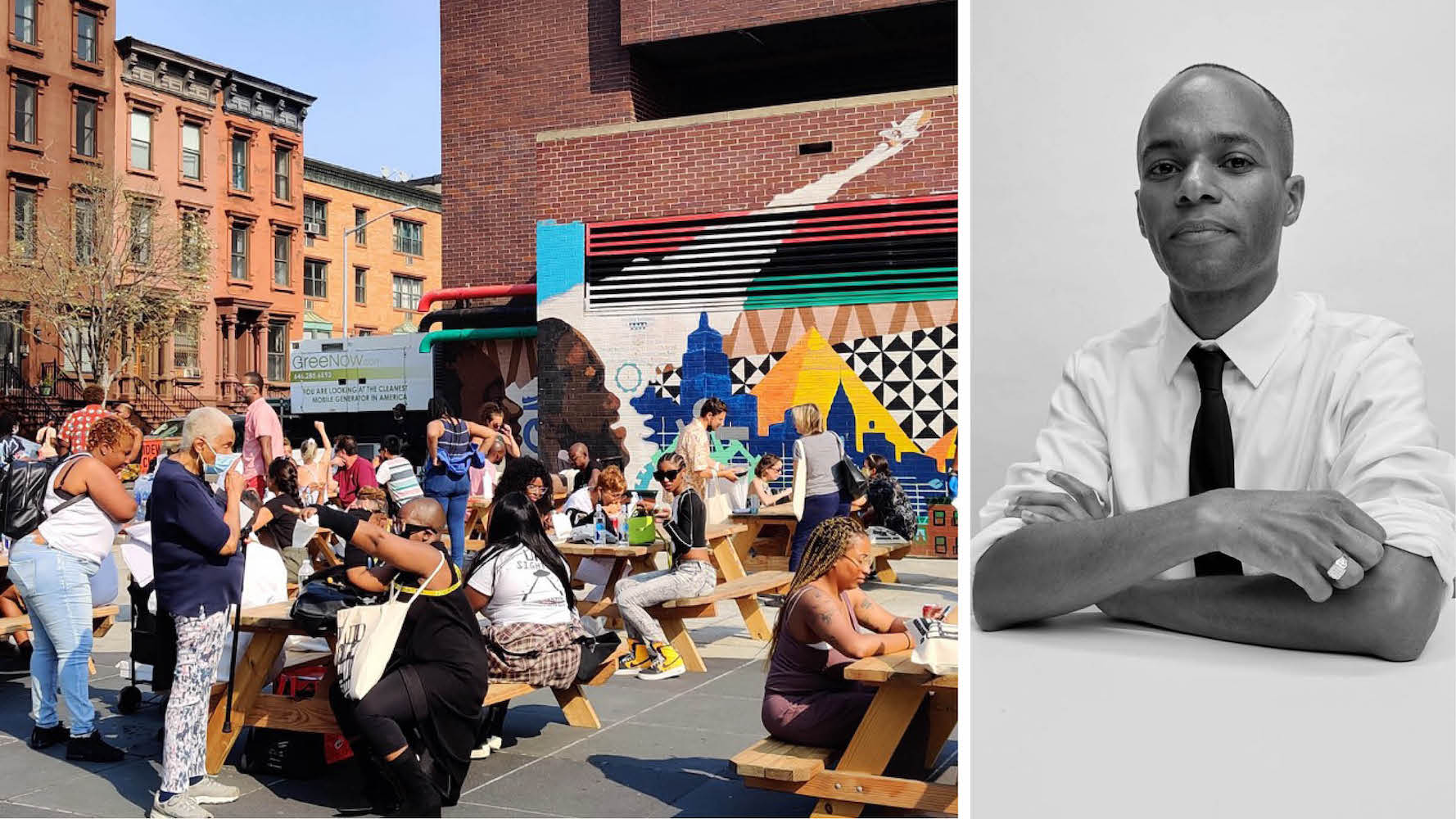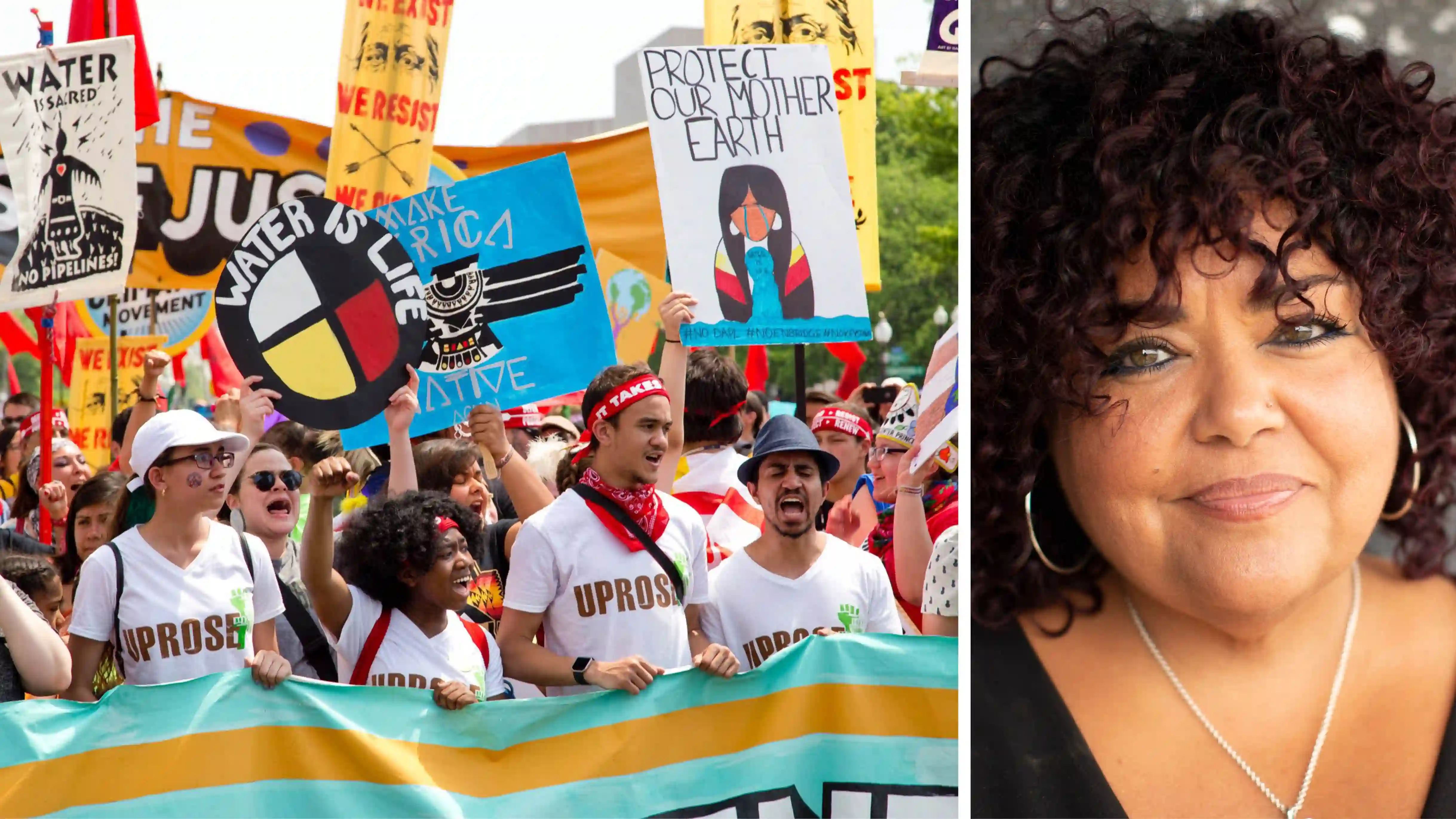Perspectives on Climate Justice: Justin Garrett Moore

Urban planner Moore (right) has fifteen years of experience in New York City's public sector. Images courtesy Justin Garrett Moore
For our June 2022 special feature on climate justice, RECORD spoke to changemakers in the field for a diverse array of perspectives on social justice and the climate emergency.
Justin Garrett Moore is an urban designer and planner whose work focuses on equity and inclusion through place-making initiatives and public space design. As executive director of the New York City Public Design Commission from 2016-2020, he led several projects focused on social equity and environmental sustainability, including the Greenpoint-Williamsburg Waterfront and Hunter's Point South. Currently the inaugural program officer at Andrew W. Mellon Foundation’s Humanities in Place program, he oversees place-based initiatives that advance social justice in the built environment. Moore holds a master of architecture and master of science in urban design from Columbia University, where he is an adjunct professor of architecture.
What does environmental justice or climate justice mean to you?
In the framing around climate and justice, climate has been in the realm of the scientists and policy makers, and the social justice and environmental justice movements have been coming from other spaces. For example, people in the American south have been dealing with industrial agriculture or oil companies, doing this work in direct ways that are not somewhat abstract, unlike global warming or embodied carbon. It’s been clear: our people are dying, our water is poisoned. These two perspectives intersect, of course, but they are coming from different understandings and motivations.
In terms of what is called climate justice or the climate change movement, there’s a lot of frustration. People who have agency and power are in different positions than many of the people who have been part of the environmental justice movement for a long time. People behind those movements look at the problems very differently and are connected with very different institutions. So, it's really important to acknowledge, within these conversations, that it’s the same goal or the same objectives but that people are coming from different experiences that frame the issues and their urgency in different ways.
What do you see the most urgent climate justice issues facing urban designers today?
Obviously, for example, flooding and storm resilience are in a space where communities located in low-lying areas or close to industry have had very direct impacts, and there is a disconnect with the wealth of those communities, where some people have the ability to get mortgages or loans to repair their property after flooding or infrastructure damage, while historically Black communities are continually dealing with these ongoing issues.
Other serious justice issues can be seen in Cancer Alley, along the Mississippi outside New Orleans. The Descendants Project was started by a group of descendants of people who were enslaved on the Whitney sugarcane plantation. Over time, the economy changed from a plantation economy to a petrochemical economy, so there are oil and petrochemical companies all along the river [where a high number of Black and brown communities have been exposed to pollution and have suffered disproportionately high rates of cancer]. So in that area, you have one of the most stark and extreme kinds of environmental injustice.
Another similar problem are places that have seen highway construction located right through Black and brown, and immigrant and low-income communities, with a direct impact on health and well-being. The climate and carbon people talk about trucking and fossil fuels while people in those communities are saying, our kids have asthma and they're dying. So it's the same problem but the impact and the connections that people have to them are quite different. The broader picture of sustainability in those places and communities is connected to how the world was made and built around these questions of energy and resources.



